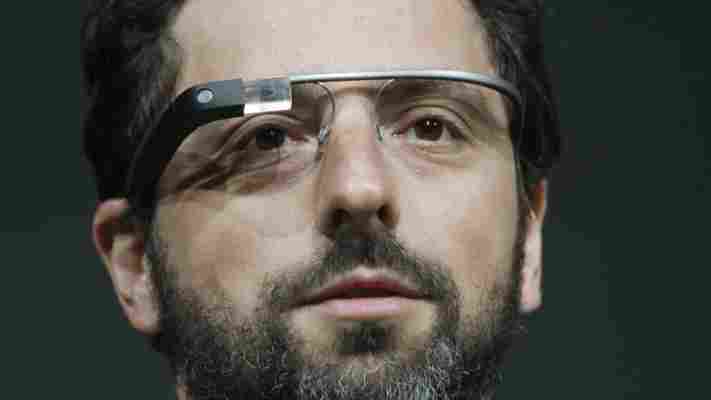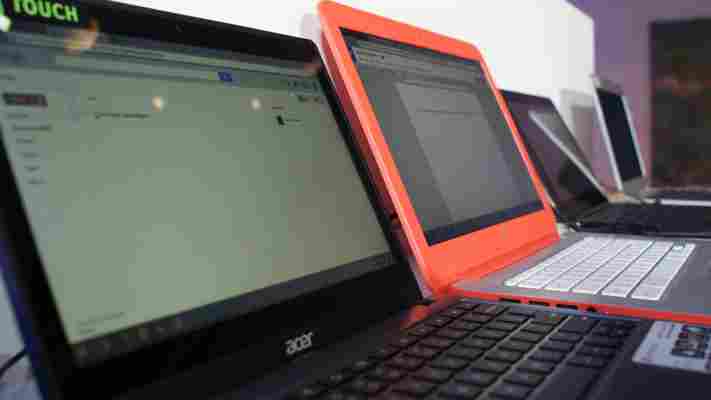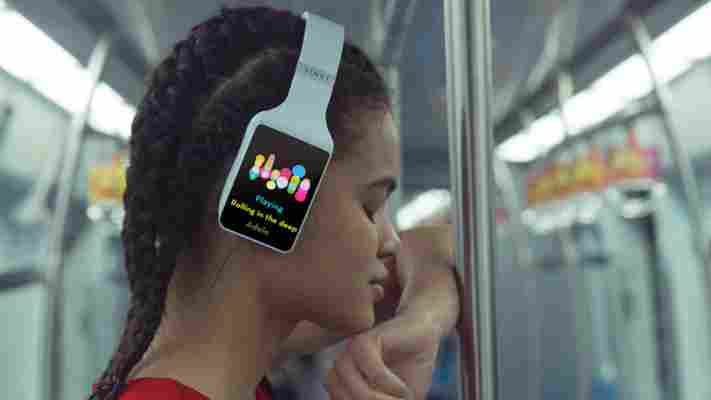Google today announced the latest monthly update ( XE10 ) to its Glass project, adding new features currently only available to a lucky few gadget owners. The new additions include public transit directions, tap-to-select links in notifications, and profile pictures.

The first one is easily the most important feature. When you ask to get directions and select Transit (just like you can on Google Maps), you’ll get access to a bunch of helpful information, including where to change trains, how far you have to walk to the bus stop, and how long it should take to reach your final destination.
Using the Android MyGlass app, you can get transit directions for buses, street cars, and subways (remember when Sergey Brin was spotted wearing Glass and riding the subway?). From the Home screen, just say “OK Glass, get directions to…” and the device will pull up directions by whatever method you used last. To switch the mode of transportation, tap the directions card and swipe until you see Transit.
Unfortunately, the Transit option is only available to Glass Explorers who have paired their device to their Android phone. That means iOS users are out of luck, though we assume they will get the same functionality for their iPhones soon enough.
Next up, Glass users now have the ability to tap to select links in notifications, tweets, texts, emails, and so on. To visit a link, tap on the card and select “View site.” Google says this feature was added directly in response to user feedback.
The company hints that more features are also included in this update, but the release notes only mention that when sending messages or making comments, you’ll now see the profile pictures of those you’re conversing with in the background. Rumor has it that XE10 is supposed to open the door to native Glassware apps from all developers.
It’s not clear yet if that is true and Google will be making a follow-up announcement soon or if this part has been delayed. We have reached out to the company and will update this article if we hear back.
Update at 5:15 PM EST : Google has confirmed that the Glass Development Kit isn’t ready yet. “So I think the point of clarification is that 3rd party Glassware has been around for months (using our mirror API) and that includes Twitter, FB, Evernote, CNN, etc (announced at I/O this year),” a Google spokesperson said in a statement. “But this is different from the GDK Glassware. The GDK itself is still in development but will be released down the road.”
See also – How Google Glass can evolve as a tool for journalists and Google letting Glass Explorers invite a friend to join the program
Top Image Credit: Kimihiro Hoshino/Getty Images
Intel and partners introduce “socially conscious” Bay Trail Chromebooks with 11+ hour battery life
Chromebooks seem to be getting a foothold where the netbook failed. At the Chromebook event today, Intel introduced a bevy of notebooks from its partners, powered by Google’s Chrome operating system.

With the PC market dwindling, Intel is keen to expand its portfolio. By jumping on the growing Chromebook market it can keep doing what it does best–making silicon–while partnering with Google and its emerging OS.
At today’s event Dell and Acer also announced 4th generation Core i3 processor Chromebooks. With additional announcements from Asus and Lenovo, the chip maker was also able to keep its promise to create conflict-free microprocessors while delivering all-day battery life.
At today’s event Dell and Acer announced 4th generation Core i3 processor-powered Chromebooks. The Core i3 notebooks will have a distinct power advantage over current offerings. The Acer C720 will ship in time for back to school season for $349. The new Dell Chromebook 11 will be available later this year with no information on pricing as yet.
In addition, Asus will ship the 11.6-inch C200 and 13.3-inch C300 this summer; Lenovo announced the N20 and N20p Chromebooks. The N20p will have a touchscreen; Lenovo also has the education-focused ThinkPad 11e and ThinkPad Yoga coming. The Yoga, like its Windows brother is a twist and flip hybrid that doubles as a tablet.
And finally the HP Chromebox will be available at US retail in June.
The notebooks, part of the Bay Trail Chromebook line, feature the conflict-free Intel Celeron SoC (system-on-chip). The minerals tin, titanium, gold and tungsten usually come from the Democratic Republic of Congo where warlords control the trade. Intel has created an audit and verification system for the region to determine if a mineral has originated from a militia-run minning operations. It’s an important system from the company that leads the microprocessing market.
The Bay Trail Chromebooks have an impressive 11 hour-plus battery life, up from 10 hours from Haswell-based Chromebooks. The low-power chips also allow for fanless, thinner form factors and wireless networking that’s three times faster than previous models with 802.11 radios, Intel says.
Are these ridiculous headphones the way forward for music tech?
As someone who listens to multiple albums’ worth of music each day, I thoroughly enjoy discovering new sounds and artists. But what I like more is connecting with people because of a shared interest in tuneage.

Between a ton of records collected over the years, YouTube’s ever-growing library of tracks and videos and platforms for indie artists like Soundcloud, I’m drowning in stuff to listen to. The trouble is that these days, it’s mostly a solitary experience.
In recent times, the focus in music technology has been on making content more easily accessible to listeners, with streaming services becoming available worldwide and offering up millions of songs for a flat monthly fee.
Sadly, what doesn’t seem to have been explored much is using music to enable social interactions in the world.
I began thinking about this while testing Vinci’s headphones . Although the company is keen on pushing features like support for voice controlled playback and built-in fitness tracking, what piqued my interest the most was the screen on the outside of the earpiece that’s visible to anyone around you.
That sounds kinda silly at first – what good is a screen that you can’t see? But maybe there’s something novel in there. Imagine that the screen displayed the track you were currently listening to, so others could see it too. That could spark a conversation with a stranger about your tastes in music and perhaps even lead to the two of you swapping tunes and recommending local gigs to check out.
That same screen could also display a message indicating that you were open to listening to other people’s recommendations.
So if your headphone screen showed a particular icon, someone could approach you and offer to play you a track – and you could do the same for them. Simply plug your headphones into their mobile device or even connect wirelessly, and BAM! Instant music discovery and a human connection at the same time.
Credit: Matt Mechtley / Flickr
Sure, you could replicate some parts of these experiences with apps – but then you’d lose out on the chance to meet a fellow human being in that moment.
Back in the 80s and 90s, boomboxes that featured cassette players and integrated speakers were common in the US and let the entire block know what you were listening to. Now, with discreet little smartphones and earbuds jammed right up next to our cochleas, there’s little chance of sharing your music with strangers in real life.
Miles Lightwood, founder of the online archive Boomboxラジカセ Creators , articulated this well in a 2013 interview with Collectors Weekly :
Credit: Shutterstock
Of course, it’s worth debating whether people will mind an intrusion into their personal space while commuting or hanging out at a park. But it feels like all the amazing technology we now have at our disposal for enjoying music is closing us off from other people instead of bringing us together.
The gadgets and services needed to make music more social seems fairly simple to create at this point. The question is, are we ready for it?
